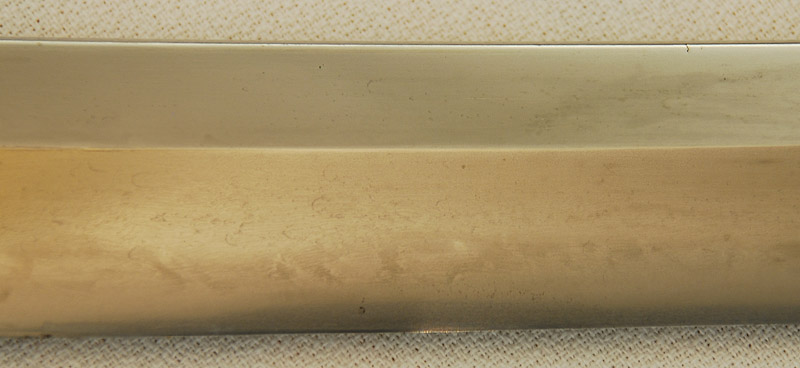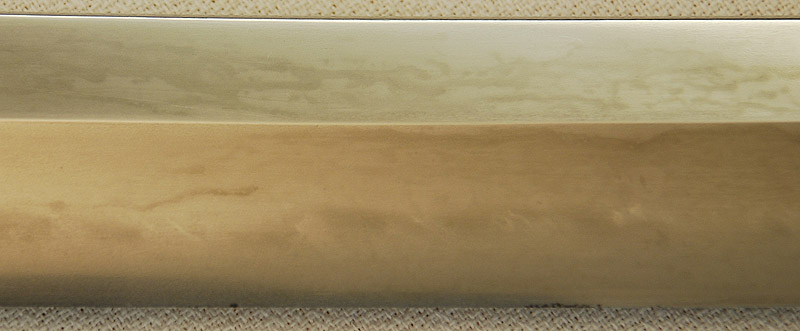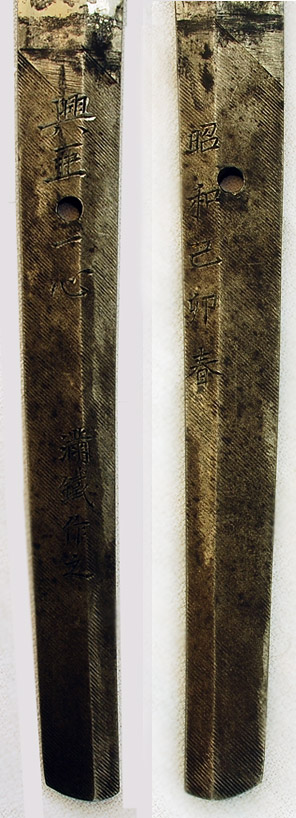
|
|
Production Process and Composition of Gunsui-hagane
This essay is an attempt to answer the questions raised in the Ryuminsai Kanetomo article with some supplemental information on the Gunsui-hagane.
Gunsui-hagane (Gunsui steel) was made by an electric furnace process developed by Takeo Miyaguchi. He was an electric engineer and finally became the president of Gunma Hydroelectric Industries Corp, the parent company of Gunsui Denka Industries, who made the Gunsui steel. According to the article "Gunsui-to", he modified the Heroult-type electric furnace for the process in that, among others, the electrodes were re-arranged to avoid contacting with molten steel and local overheating. The charged materials were "cast iron or pure iron made from iron sands", as described by Miyaguchi himself cited in "Gunsui-to". The author of "Gunsui-to" put a note that the iron sands were probably those from Kamogawa Beach, Chiba-ken. It appears that those iron sands were reduced to metals in a preliminary process or processes before charging to the electric furnace.
Examples of compositions of Gunsui steel sword grade are shown in Table 1 below. The table also includes compositions of Mantetsu-to, typical modern steel specification ASTM 1075, and those of old Japanese swords, for comparison. The composition of Gunsui steel sword grade is close to other sword steels except for the manganese content. Manganese is not harmful, rather often gives steel toughness, and helps deoxidation as cooperating with silicon. Therefore, Gunsui steel must be a good material for Japanese sword, as good as Tama-hagane.
Unfortunately, I am unable to answer the other question in the article as to when Kanetomo added Nyudo to his Mei. I remember, though, a Mei on a sword he made in 1939 did not have Nyudo.
Table 1 Composition of Gunsui steel as compared with other Japanese sword steels
|
Category |
Heat No. |
C, % |
Mn, % |
Si, % |
P, % |
S, % |
|
Gunsui Steel |
2353 |
0.72 |
0.26 |
0.17 |
0.011 |
0.013 |
|
2852 |
0.75 |
0.26 |
0.12 |
0.012 |
0.013 |
|
Modern steel |
ASTM
1075 |
0.7~0.8 |
0.40~0.70 |
(not
specified) |
0.040 max. |
0.050 max. |
|
Mantetsu-to
(1) |
Skin steel |
0.57 |
0.05 |
0.17 |
0.018 |
0.003 |
|
Japanese Sword
(skin steel) |
Tensho Sukesada
(2) |
0.51~0.57 |
0.03~0.04 |
(na)
(3) |
0.025 |
trace |
|
Shinto Hirotaka
(2) |
0.80 |
trace |
(na) |
0.018 |
trace |
|
Bizen Sukenori
(4) |
(na) |
trace |
0.14~0.26 |
(na) |
(na) |
Photos of example swords
A Gunsui-to Katana
Special thanks to Dave Meinhart for allowing us to photograph this Gunsui-to.
Mei: "Gunsui kore saku"
Jitetsu: Itame mixed with Mokume
Hamon: Nie-deki Choji
|













